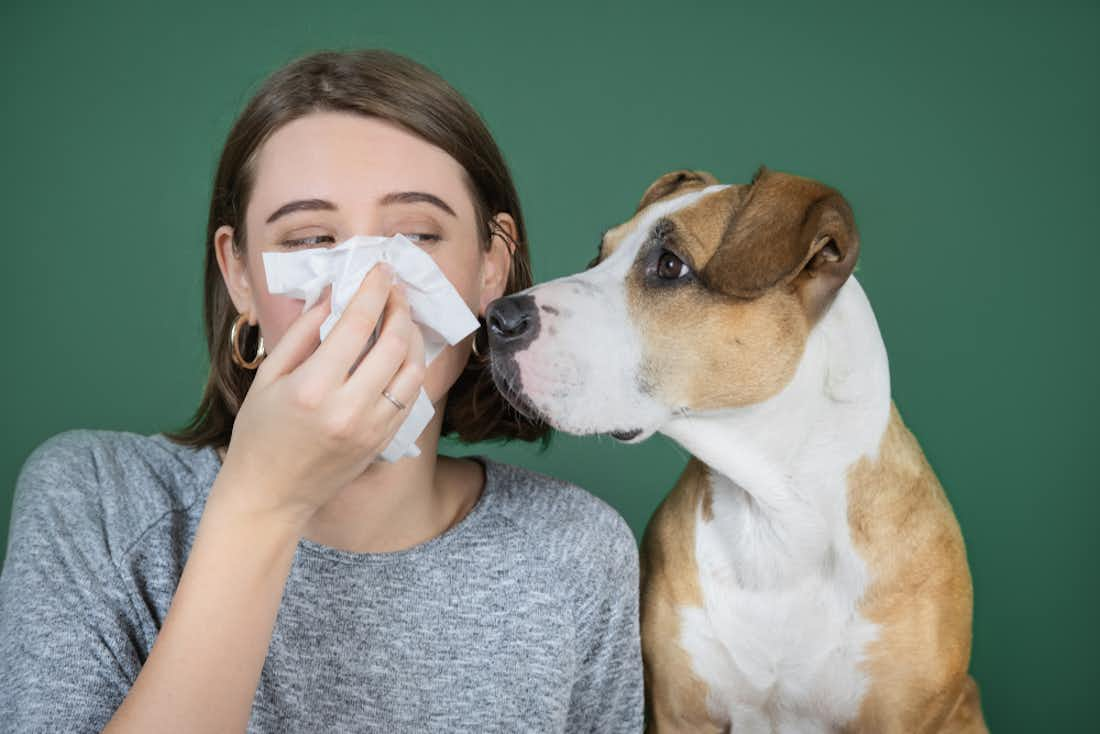Sep 12, 2022
Ticks That Cause Meat Allergy: What You Should Know
5 minute read
Food allergies are super common, and nearly four percent of adults are affected. Common food allergens include eggs, soy, and shellfish, but you can pretty much be allergic to any type of food.
While many people outgrow food allergies by reaching adulthood, there are rare circumstances where food allergies can develop later on. And if you’ve started to notice that things like beef, pork, or lamb cause you to have an allergic reaction, it may have been due to a bite from a tick.
This sounds like something right out of a sci-fi novel, and while it is a rare occurrence, a bite from a special species of tick may make you allergic to your favorite meats. Here’s everything you need to know.
What Tick Causes Meat Allergies?
Mammalian meat allergy, or MMA, is an unusual meat allergy condition that occurs after eating animal meat while being exposed to a tick bite in the past. It’s also called an alpha-gal allergy because this is the name of the sugar molecule that the tick transmits into the human bloodstream. In some people, this spurs a mild to severe allergic reaction after ingesting red meats.
This condition is most often associated with the Lone Star tick, which is predominant in the southeastern United States, where most circumstances of alpha-gal syndrome occur.
One of the positive aspects of the Lone Star tick is that it is not known to carry or transmit Lyme disease, a potentially deadly condition marked by fever, headache, and fatigue.
Other Causes of Alpha-Gal Syndrome
While the Lone Star tick is by far the most common way to contract a meat allergy later on in life, this syndrome has also been associated with a cancer drug called cetuximab. Some people who have previously been exposed to a tick bite also experience increased vulnerability when exposed to this medication.
Symptoms of Alpha-Gal Syndrome
One of the tricky aspects of this disorder, and one of the main reasons it often goes mistreated, is that symptom onset is usually delayed after meat ingestion. While allergic reactions to foods like eggs or nuts occur within minutes, a reaction to meat in alpha-gal syndrome can take up to six hours to appear.
Researchers aren’t entirely sure why this is, but it’s believed to be because alpha-gal molecules take longer than other common food allergens to be digested.
Red meats like pork or beef, as well as other mammalian-derived products like gelatin or dairy, can elicit an allergic response:
- Hives, itching, scaly skin
- Swelling of the lips, face, tongue, throat, or other body parts
- Runny nose
- Shortness of breath; wheezing
- Stomach pain or diarrhea
- Headaches
- Sneezing
- Nausea
- Dizziness
In some cases, a life-threatening allergic reaction called anaphylaxis can occur. This is when the immune system releases a flood of chemicals and causes the body to go into shock, suddenly dropping blood pressure, narrowing the airways, and stunting breathing. It requires a shot of epinephrine and a trip to the emergency room.
Your healthcare provider can also do a blood test after a physical examination—a blood test searches for specific antibodies in your blood.
What Do I Do If I Get a Tick Bite?
Especially if you live in the southeastern United States or spend a lot of time outside, it’s essential to know what to do if you find yourself getting bitten by a tick. If you can remove the pest from your skin as soon as possible, you may be able to prevent ailments like alpha-gal syndrome or Lyme disease.
First thing’s first: check your entire body when you come home from being outdoors. This includes your hair, back, and genitals. It helps if you can have someone else look through your hair, but if you’re by yourself, just try looking in a mirror.
You should be able to see a tick on the surface of the skin. If a tick is crawling on you and hasn’t yet bitten your skin, you can remove it with a tissue and dispose of it in the toilet. A tick on your skin isn’t an issue -- it’s the tick saliva from a bite that causes problems. If it has already taken a bite, you’ll need to get a pair of tweezers.
Using your tweezers, get as close to the skin as you can. Grab the tick and pull upward with steady, even pressure. Once removed, flush it down the toilet. Clean the bitten area with rubbing alcohol or soapy water.
Your risk for developing Lyme disease is low if the tick has been attached for fewer than 36 hours. However, it’s not known how long a Lone Star tick needs to be attached to your skin for it to give you alpha-gal syndrome.
How To Prevent Tick Bites
The best course of action to treat a tick bite is to prevent it from happening in the first place. Ticks are most active from April to September, though they can still bite you year-round. Here are some easy ways to keep yourself safe while exploring the outdoors.
Wear the Right Clothing
Ticks only really care about chomping on your bare skin, so if you wear clothing that covers it, they won’t pay much attention to you. Throw on long-sleeved shirts, high socks, boots, and long pants to create a barrier between you and these pests. Be sure also to tuck your pants into your boots for extra protection.
On top of that, you can treat your clothing with products containing permethrin, which is a tick repellent. This can be used to treat both your clothes and camping gear, and other outdoor fabrics to keep ticks far away.
Permethrin is unique because it does not need to be re-applied to your clothing in the same way that you’d need to re-apply other insect repellents. Instead, it binds to the fabric and only needs to be reapplied every few months.
Tick checks and showering after being outdoors are never a bad idea.
Stay on Track
When hiking or walking through the woods, do your best to avoid brushy areas with high amounts of grass and leaf litter. This is where ticks like to spend most of their time. It’s best to stay in the center of trails whenever possible.
Use Insect Repellent
Before spending time outdoors, it’s always a good idea to use insect repellents to keep ticks and other bugs out of your personal space. DEET can be sprayed directly on the body, while Permethrin can be used on your clothes.
Preventing and Treating Food Allergies
Food allergies such as those to red meats and more common ones to peanuts and shellfish are sometimes easier to avoid when compared to airborne allergens. This is because, as long as you know the ingredients in the food you’re eating, you can just avoid consuming what triggers your symptoms.
Of course, that’s easier said than done. Especially when eating out at a restaurant, it can be hard to know exactly what ingredients are in the meals that you’re ordering. Talking with a dietician, nutritionist, or visiting an allergy clinic may be helpful.
Those with alpha-gal syndrome will need to avoid eating red meats like bacon or steak. However, since only mammalian animals are associated, you can still safely consume poultry such as chicken, duck, or turkey.
Since alpha-gal allergies have a hallmarked delayed onset, it can be hard to determine exactly what’s causing your symptoms. Taking an indoor and outdoor allergy test can help eliminate some options or even shed some light on triggers that you didn’t expect to have. This only makes it easier to avoid the factors that cause you to sneeze and wheeze.
Tick Tock
The Lone Star tick is a tick that’s native to the southeastern United States. It can cause a rare allergy known as alpha-gal syndrome if its saliva enters the human bloodstream. This causes a red meat allergy, making consuming foods like pork or beef impossible without experiencing symptoms.
While symptoms vary from person to person, the hallmark characteristic is that they don’t appear until around three to six hours after the food is consumed. This makes it difficult to understand exactly what’s causing the allergic reaction.
If you have any doubts, your online allergist is ready to see you. With Cleared, you’ll get a personalized treatment plan that works just right for you, so you can finally get the relief you deserve from food, airborne, or seasonal allergies. Take your free allergy consultation here.
Sources:
Alpha-gal syndrome - Symptoms and causes | The Mayo Clinic
Anaphylaxis - Symptoms and causes | The Mayo Clinic.
What to Do After a Tick Bite | Johns Hopkins Lyme Disease Research Center
Food Allergies | Causes, Symptoms & Treatment | ACAAI Public Website
Authors

Dr. Payel Gupta
Medically reviewed by Dr. Payel Gupta



